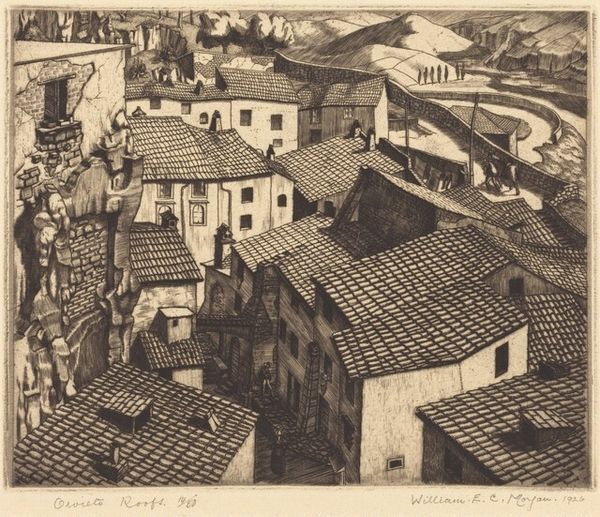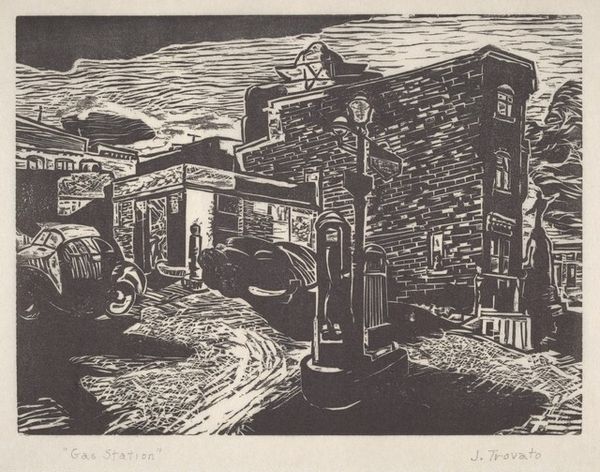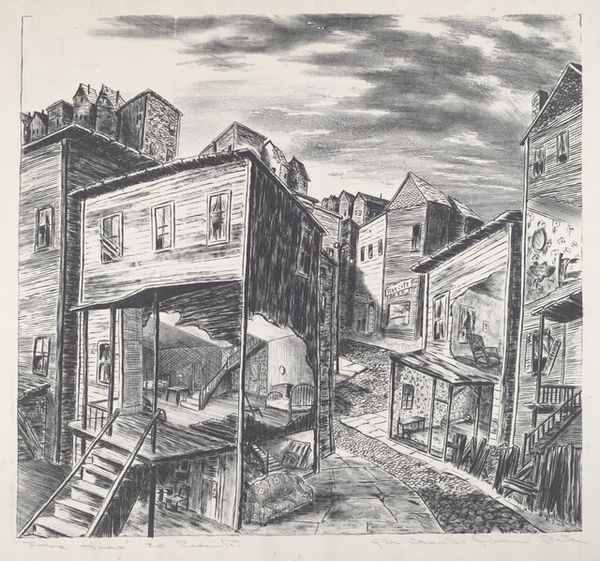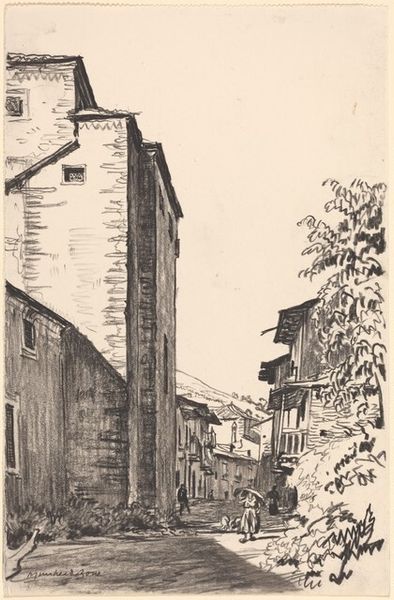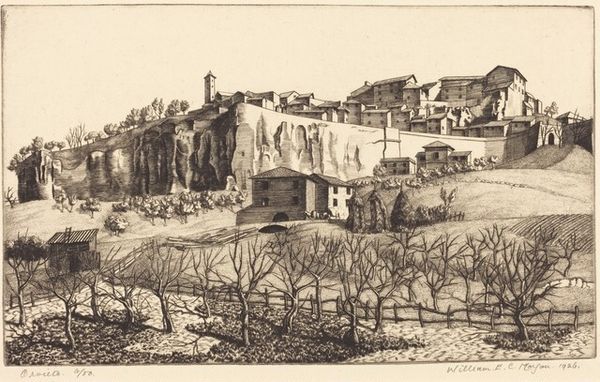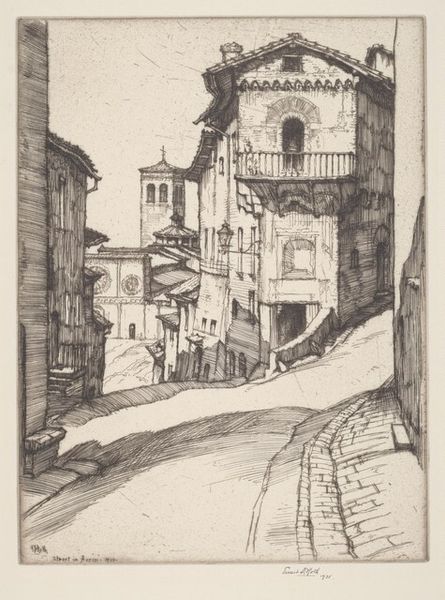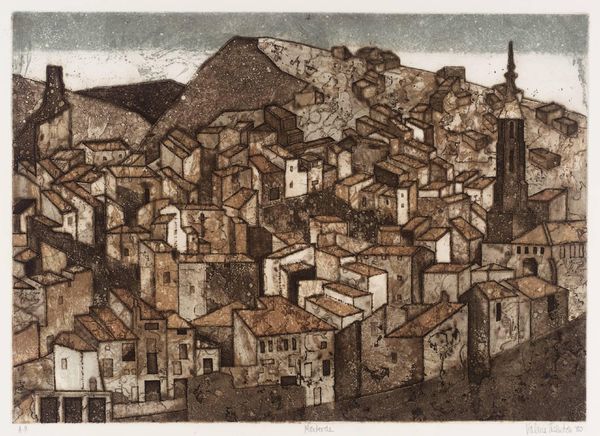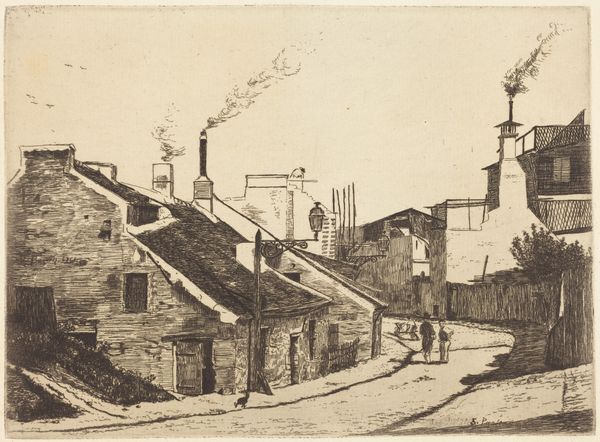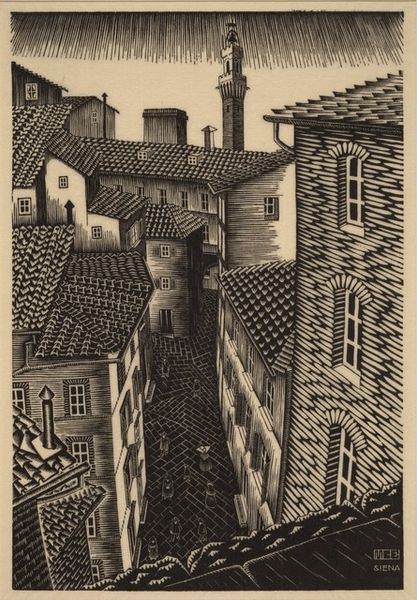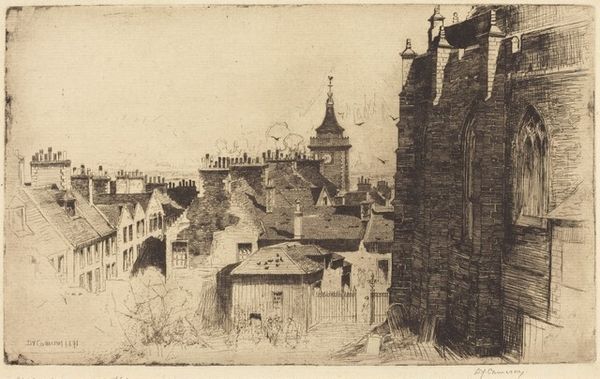
drawing, print, etching, ink
#
drawing
#
ink drawing
# print
#
pen sketch
#
etching
#
landscape
#
ink
#
cityscape
Dimensions: plate: 16.5 × 25 cm (6 1/2 × 9 13/16 in.)
Copyright: National Gallery of Art: CC0 1.0
Editor: Henry Rushbury’s "Carceri San Gimignano," created in 1925, is a cityscape etching. The sharp detail and the way the buildings almost huddle together give it a rather intimate, yet slightly claustrophobic feeling. What stands out to you in terms of its history or context? Curator: Rushbury created this print during a period of increased tourism to locations like San Gimignano. Consider the early 20th century; etchings like these catered to a market eager to own a piece of Europe, a tangible memento of their travels. Do you think this artwork plays into a particular romanticism of Italy, perhaps obscuring the realities of daily life for its inhabitants at that time? Editor: I can see that. There's a quaintness to it, almost a postcard quality despite the serious rendering style. Did the choice of etching as a medium influence its reception or intended audience? Curator: Absolutely. Etchings were relatively affordable, enabling wider distribution. This also positioned the artist within a longer lineage of printmaking, tied to democratizing art and information. Also consider its exhibition in galleries or even sales directly from artist studios. Where do you envision audiences first encountering such work? Editor: I guess I hadn't considered the market forces behind it. Thinking about the print being sold in a gallery changes my view quite a bit. So it’s not just about capturing a place but about selling an experience. Curator: Exactly. The art market, socio-economic accessibility, and intended consumption are all factors that informed the image we are looking at. The tourist industry and affordable artwork go hand-in-hand. It truly enhances one's understanding of the artist’s decisions, doesn't it?
Comments
No comments
Be the first to comment and join the conversation on the ultimate creative platform.
